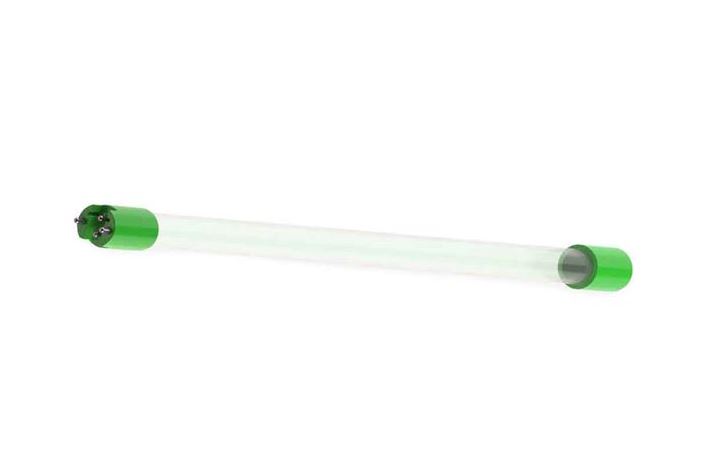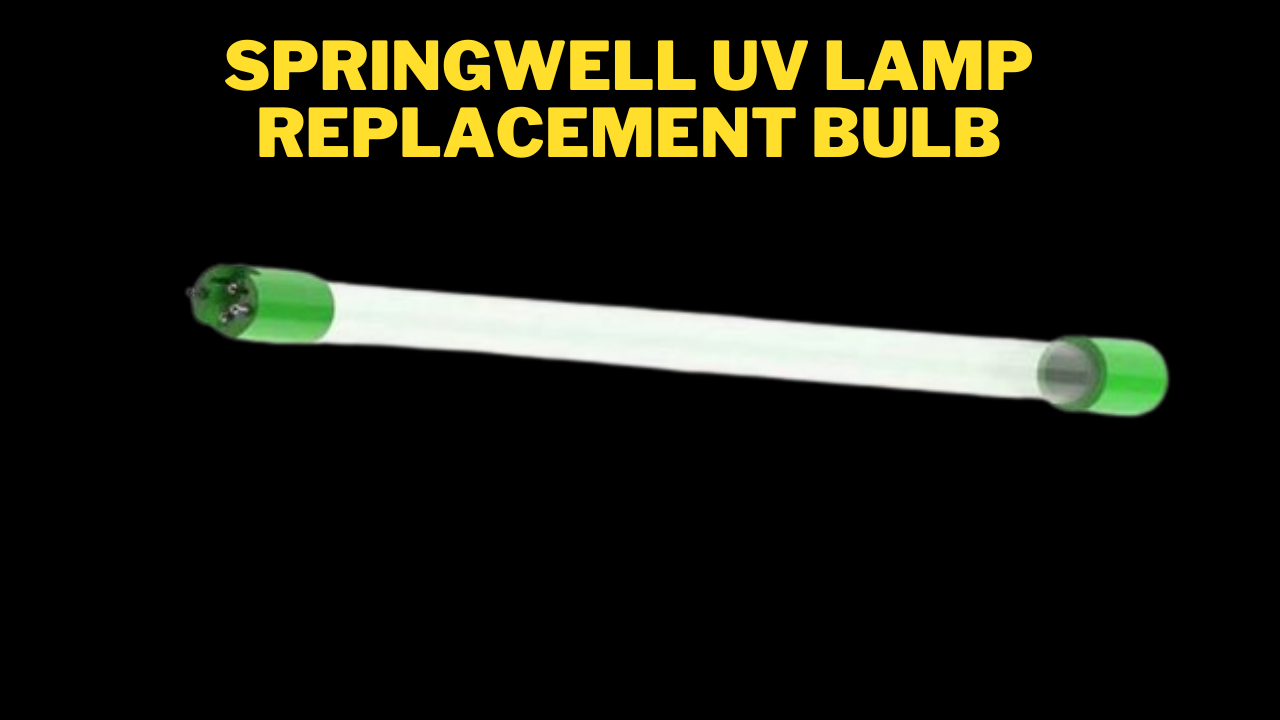If your Springwell UV water filtration system needs a new lamp or key, the springwell UV lamp replacement is a great option. Because it kills germs in water as they pass through, the UV lamp is an essential part of your UV system. To maintain the purest water possible, it is important to replace your UV bulb at the recommended intervals.
The SPRW-UV-420HO is a genuine Springwell light with a 1-year lifespan. Since the efficacy of the UV-C light decreases with time, it is crucial to change the bulb as soon as it reaches 1 year or every twelve months.
The significance of utilizing an authentic Springwell UV lamp replacement is great. It has been tested and certified by Springwell as a whole. You can rest easy knowing that your family’s water is safe to drink when you use an original Springwell UV light, which guarantees effective system performance and water disinfection.
Springwell UV Lamp Replacement
You can easily replace this UV replacement bulb, and it lasts up to a year. When you buy the Springwell UV system, it will notify you when it’s time to replace it and give you an idea of how much life it has left. If you have any questions, you can contact one of their representatives once you choose the bulb size.
You can make sure that your UV disinfection system kills disease-causing bacteria including E. coli, Salmonella, and Cholera by changing the bulb at the recommended intervals.

How does the Springwell UV lamp work in water treatment?
As it flows through the chamber, water is treated by a UV light that kills any bacteria or viruses in the water using a specific wavelength called UV-C. The water microbes will change their DNA to make it impossible for them to reproduce or cause an illness when they absorb the UV rays.
You should still replace the UV bulb in your system as a precaution, even if the lamp is still bright and hasn’t burned out at 9K hours or 12 months. We kindly notify clients via email when it is time to update their UV light.
When Is the Best Time to Change a UV Lamp?
Keep your home free of germs, viruses, and other potentially dangerous microbes with the aid of a UV light water filtration system with a new lamp.
However, to keep your UV water filter functioning properly, you must clean the sleeve and replace the UV lamp regularly. Your family might be putting itself in danger of drinking water contamination if you don’t change the light bulb regularly.
Read the owner’s handbook of your UV system carefully before replacing the light. The following are simply broad guidelines, as there are many various brands of UV water filtration systems.
How often should you replace the UV bulb?
Replacing the UV lamp in your water disinfection system at the recommended intervals will keep it running smoothly. The typical lifespan of a UV lamp is around nine thousand hours, or twelve months, after which they begin to lose their efficacy.
U.V. lights solarize instead of burning out, unlike traditional light bulbs. This implies that with time, their light wave intensity will decrease to around 60% of what a fresh UV bulb offers. To prevent the system from ineffectively protecting against viruses and other aquatic germs, it is crucial to change the light at the recommended intervals.
Springwell UV light installation
Step 1: Reactor placing
Use the included clamps to place the reactor horizontally or vertically. Because air can be more readily purged from the system in a vertical installation with the intake at the bottom and the lamp connection at the top, this is the preferable technique.
Step 2: Separate the reactor
To separate the UV reactor, you should utilize a bypass assembly. If repairs are necessary, this will make entry much easier.
Step 3: Mounting the reactor
Mount the UV reactor to wood or drywall using the bolts that come with it. It is necessary to get the appropriate fasteners to mount to any other material.
Step 4: Install flow restrictor
To ensure that the rated flow of your specific system is not exceeded, a flow restrictor is advised for water supply where the maximum flow rate is unknown. The input port of the reactor is the proper location for the flow restrictor.
Step 5: Connecting reactor with water supply
Connecting the UV reactor to the water supply is best done by a certified plumber, although this may be necessary in your area.
Step 6: Installing the quartz sleeves
After the system is plumbed in, carefully remove the quartz sleeve from its package, being cautious not to contact the length. For this technique, it’s best to wear cotton gloves. Hand oils can create a residue on the sleeve and lamp, which can eventually prevent UV radiation from reaching the water. With great care, insert the sleeve into the reactor and continue doing so until you feel it contact the other end. To secure the sleeve into the internal centering springs on the other side of the reactor, align it such that it is centered throughout its length and slightly press it in.
Caution: The centering springs are vulnerable to over- or under-pressure when the sleeve is misaligned. Position the o-ring such that it touches the reactor when you slide it onto the sleeve.
Read Also: Springwell Water Softener Reviews
Is it possible to extend the life of the UV lamp by turning it off when it’s not in use?
No. You should not toggle the UV light on and off settings. Turning a UV lamp on and off too frequently will reduce the ballast life of your system and has the potential to prematurely fail the lamp. Every time you turn the light on and off, it might drain the battery by as much as six (6) hours. Since ultraviolet light uses so little power, the UV water filtration system is best left on all the time, even when no water is running through it.
Therefore, do not turn off the system just because you will be gone from your lake house or cottage for a few months. Your home might be at risk of contamination from bacteria in your well water if you fail to switch the system back on.
Disadvantages of not replacing the UV Lamp
To keep your UV unit clean and bacteria-free, you’ve probably put it in your home or place of business. However, just like any other piece of machinery, it needs regular maintenance to ensure it continues to function properly.
Unsafe water for use
In contrast to regular light bulbs, which need replacement after they’ve blown (no longer emit light), ultraviolet (UV) bulbs can continue to emit light even after a year of usage. You may still use the water for cooking, bathing, and drinking, but the amount of bacteria it kills won’t be as high as it would be with a new UV lamp.
Increased germs
As germs accumulate within the UV unit, water will ultimately flow out the opposite end of the glass tube, bringing the bacteria with it. If you want to avoid having germs in the water you drink or bathe in, you might as well just get a direct feed from the water supply instead of using a UV device.
Health problems
The residual germs in untreated water may create a host of problems for yourself and your family’s health if they drink it.
PRO Tips
Some ultraviolet light systems have a “ballast” or controller that will sound an alarm to remind you to change the lamp. You can see a green light, hear an alert, or see a countdown from 365 days till the replacement is due—these are all examples of indicators.
We recommend setting a calendar alarm in case your UV water disinfection device doesn’t have a light countdown.
Frequently Asked Questions
Are UV Lights Dangerous?
A sturdy 304 stainless steel UV chamber securely houses the UV lamps that kill germs in UV water disinfection systems. This chamber blocks out harmful ultraviolet radiation as it exists. There are safeguards in place to prevent you from replacing the light without first disconnecting the power cable. Only then can you remove the bolt that opens the chamber.
In water, is ultraviolet light harmful?
Using ultraviolet light to disinfect water, aquariums, and other surfaces is a risk-free option. While the sun’s ultraviolet (UV) rays can be harmful to humans when they come into direct contact with skin, they have no effect on water in a UV lamp water purifier.
In a water purifier, is it preferable to use a UV light or an LED?
When it comes to large flow rates (more than 5 gallons per minute), UV lamps are the way to go because of their size, power, and use in broad channel reactor designs. When it comes to low flow rates (less than 5 gallons per minute), the high-intensity point source output of UVC LEDs makes them a great choice for efficient reactor designs.
Final Words
Every one of Springwell UV lamp replacement units comes with a user-friendly manual. As the bulbs wear out and lose some of their effectiveness, it’s time to replace them. The bulbs transmit the UV light within the device to the area where the water flows through.
To keep the UV unit from becoming a breeding ground for germs and contaminating the water supply, it is crucial to change the bulb regularly.
Whether you have a UV system in your home or business, changing the bulb is an important aspect of keeping it in good working order.
